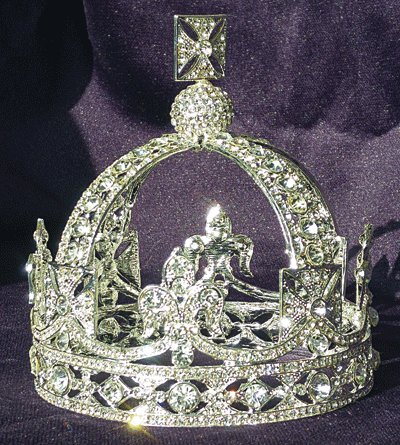Virtually all Canadians have known no other monarch than Queen Elizabeth II. Yet when the young, glamorous royal came to the throne in 1952, it seemed a fusty relic in a world clamouring for change, especially the colonies of the once–invincible British Empire. Today, the House of Windsor is the epitome of a solid, successful monarchy, with three generations of heirs in line for the throne.
The modern royal family has largely been moulded into its current shape by its women, and they are the focus of three recent illuminating quasi-biographies. Individually they offer unique insights into the powers, privileges, and limitations of being royal. Together, they help explain how and why the royal family has not only survived but thrived through some trying, troubling times.
But nothing is forever and, as Elizabeth’s reign nears its end, Canadians have as much reason as anyone to wonder what comes next. Will it be continued stability or controversy that fuels a republican movement—and a constitutional crisis?
The most transformative Windsor is the current Queen. Robert Hardman’s engrossing and deeply researched books have reshaped our view of her monarchy and in his latest, Queen of the World, he examines Elizabeth’s least examined role, as world statesman. Hardman’s portrait shows how the head of state has been far more influential than previously thought, and instrumental in transforming a dying empire into a Commonwealth that now encompasses 53 nations.

What’s next for the Crown—stability or controversy?
Christopher Carr via Flickr
She is the embodiment of soft power. In 2011, with one deep bow at Ireland’s Garden of Remembrance, dedicated to those who fought against Britain for independence, she symbolized the new era of peace between the two nations in a way no politician could accomplish.
“She appears to be the last man standing,” said German journalist Thomas Kielinger. “Everything else seems to be collapsing. Democratic institutions appear to be crumbling. The monarchy suddenly stands tall and that translates into respect for her.”
The Queen’s success owes a great deal to her grandmother Queen Mary, who helped instill a sense of lifelong duty and responsibility to the monarchy into Elizabeth, insisting that the home-schooled princess receive constitutional and -history lessons. In addition, Mary’s strong work ethic was passed on. Even in her 90s, Elizabeth regularly undertakes more than 250 engagements annually. “You need not worry. Her Majesty is trained for eight hours,” one Canadian official was reassured during one of Elizabeth’s two dozen tours of her northern realm.
Mary’s own transformation from a shy, intelligent young woman to a formidable queen consort was revealed in an official biography written by James Pope-Hennessy, published in 1959, six years after her death. Even today, it is considered a masterpiece, perhaps the most insightful, and readable, royal biography. Now, in The Quest for Queen Mary, readers are given a rare look behind the gilded walls. In carefully organized research files, Pope-Hennessy recorded in exquisite detail what happened during his interviews of exiled Russian grand duchesses, kings, and queens as well as butlers and booksellers. The Quest, lightly edited by Hugo Vickers, is a deliciously witty, insightful, and gossipy psychological portrait of Queen Mary, other royals, aristocrats, and servants, many who were born in the stultify-ing Victorian era, lived through decades of tumult, and were not afraid to tell tales and reveal secrets.
The popular public visage of a straight-laced stolid family helped King George V and Queen Mary withstand the windstorms that destroyed the thrones of many of their European relatives. (Never mind that behind the scenes, George bullied his children while Mary was distant and neglectful; one senior aide called them “simply dreadful parents.”) In 1936, Mary was horrified when her eldest child, King Edward VIII, announced that he wanted to abdicate to marry a twice-divorced American. “All that she valued and admired in life seemed threatened,” Pope-Hennessy wrote, “all that for which she and King George V had patiently and steadfastly worked.” Nevertheless, she moved quickly to bolster the fragile throne of her second son, George VI, and his family, including Elizabeth.
The belief in Crown and country—so strong in Mary—would be inherited by Elizabeth, but not her sister, Princess Margaret. If women marrying into the royal family need a cautionary tale of how not to behave, it would be Margaret. In his raucous Ninety-Nine Glimpses of Princess Margaret, Craig Brown intermingles fictional sections of a life that could have been with vignettes of the unhappy, scandal-plagued life of a tempestuous, haughty princess that wags delighted in recounting. “She was such a capricious, arrogant, and thoughtless woman,” Sir Roy Strong said after her death in 2002. “The common touch she had not.”
Today, as Elizabeth’s era comes inexorably to an end, she’s accomplished the one overarching goal of such a job for life: handing it safely to the next generation. Yet as Prince Charles’s reign approaches, there is disquiet among monarchists and republicans alike, unsure whether he can sublimate his strong beliefs to those of an apolitical throne. His actions could herald seismic upheavals in Britain, Canada, and the entire Commonwealth, depending on whether he follows in Mary and Elizabeth’s dutiful footsteps, or treads the dangerous path worn down by Edward VIII, Margaret, and their ilk.
Patricia Treble is a veteran royal watcher in Toronto.

